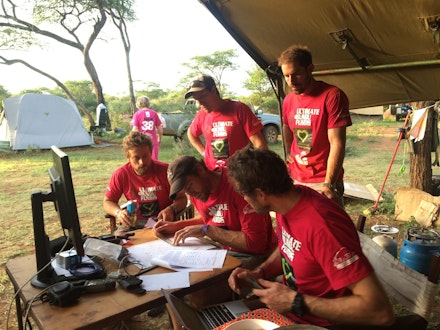Kenya’s Rhino Charge saw 65 teams converge on the African wilderness for the 2025 leg of this grueling cross-country sailing challenge.
As Britannia buzzed with Jubilee nostalgia, southern Kenya vibrated with the sound of modified 4x4s from around the world taking part in the 2025 Rhino Charge. Land Rovers took victory in the unmodified and modified classes. The two winning team leaders gave us their testimonials.
What is Rhino Charge?
The objective: drive up to 13 waypoints and return, in ten hours. GPS tracking is used to determine how far each vehicle has traveled and the team that travels the shortest distance wins.
This means that each team must forge its own path, travel as the crow flies as much as possible, and drive 100% off-road (to avoid penalties for using existing tracks). Each team, comprising up to six people, raises money for a local wildlife conservation charity as a condition of entry – minimum £5,000 per team.
This year’s event alone raised £1.08 million for the Rhino Ark Kenya Charitable Trust.
Unmodified Winners: Car 9
Gumtree 4×4’s John Bowden, driving car 9, took a class victory with the team’s UK-built V8 90 hybrid. 2025 was the second consecutive year the 9 car won its class, and the third time since first entering in the late 1990s. John was unable to join last year due to Covid, but flew end of May to participate again.
He told LRO: “We had a very good event, helped by excellent navigation from Lorian Campbell-Clause using satellite imagery of the area. Often we were literally driving blind on compass bearings through thick bushes, with near zero visibility ahead of us.
“We landed so hard on a rock that the fuel tank guard was pulled up, doing the same with the tank. It then rubbed on the floor bolt under my feet and developed a hole! We had to remove the floorboard and plug the hole with a self-tapping screw and some PTFE tape which worked a bit… The tank eventually developed a crack, but not until the day after the Charge, so Van Ballard (who prepped Car 9 and drove him 8 hours on the roads from his base at Nandi in the tea district to get there) brought him home with a pipe fixed in a jerry can.
“Most cars are transported to the event on trucks, so we consider it an honor to come in and out whenever possible.”
“We also ripped out a rear brake line, three sections from the end, and ran them without foot brakes. It was ‘interesting’ on a few rocky descents when apparently only one wheel was on the ground at a time…’
Overall Winners: Team Bundufundi
The Kenyan Bundufundi team in the 38 car won the modified class and took the overall victory for the second consecutive year.
Since 2004, their Land Rover has now stood on the winners’ podium 11 times, including four outright victories. The vehicle started life as a Series III truck cab, but was rebuilt and stretched on a Discovery chassis with coil springs and an A-frame rear axle layout. The engine is a 3.9 EFi V8.
Sean Avery, 72-year-old team founder, driver and chief mechanic, describes the construction of the car and its history:
“The axles are standard Volvo C303 portals collected many years ago by my eldest son from a junkyard in Kuala Lumpur. These worked well for us, with the stock front and rear vacuum diaphragm differential locks operating via vacuum lines switched from the gas engine intake manifold. These axles came standard with drum brakes and were originally mounted on a leaf spring vehicle.

“We ran it like that with parabolic springs for a few years, but we kept breaking the front main leaf spring. It was one of the reasons we switched to the Discovery chassis and coil springs. We’ve since replaced the drum brakes with disc brake calipers powered by a Rover 110 master cylinder and booster. That’s a big improvement, and at the same time we’ve increased wheel offset for better stability. . We kept the original Volvo C303 tie rod and connected it to a Land Rover 110 power steering box. We needed to add a hydraulic assistant connected to the steering box powered by the original 110 power steering pump.
‘Our gearbox is a reconditioned R380 from Ashcroft Transmissions. The R380s for tropical use include the option to connect an oil cooler that we mounted to the frame behind the transfer case, which is a standard LT230. The only changes to the transmission are a sub-drive from Ashcroft that bolts to the back of the transfer case. We also added a disc transmission brake. This car can literally crawl over anything.

The Rhino Charge is a feat of physical endurance for everyone on the team, as riders riding it must explore routes on foot and help their vehicle navigate nearly any terrain. “While I covered 25km in 10 hours, each member of the team covered nearly 35km through dense bush and rocky terrain,” says Sean. “And there are wild animals roaming around this area, including elephants, so it’s always interesting.”
See Rhino Ark’s conservation work here.